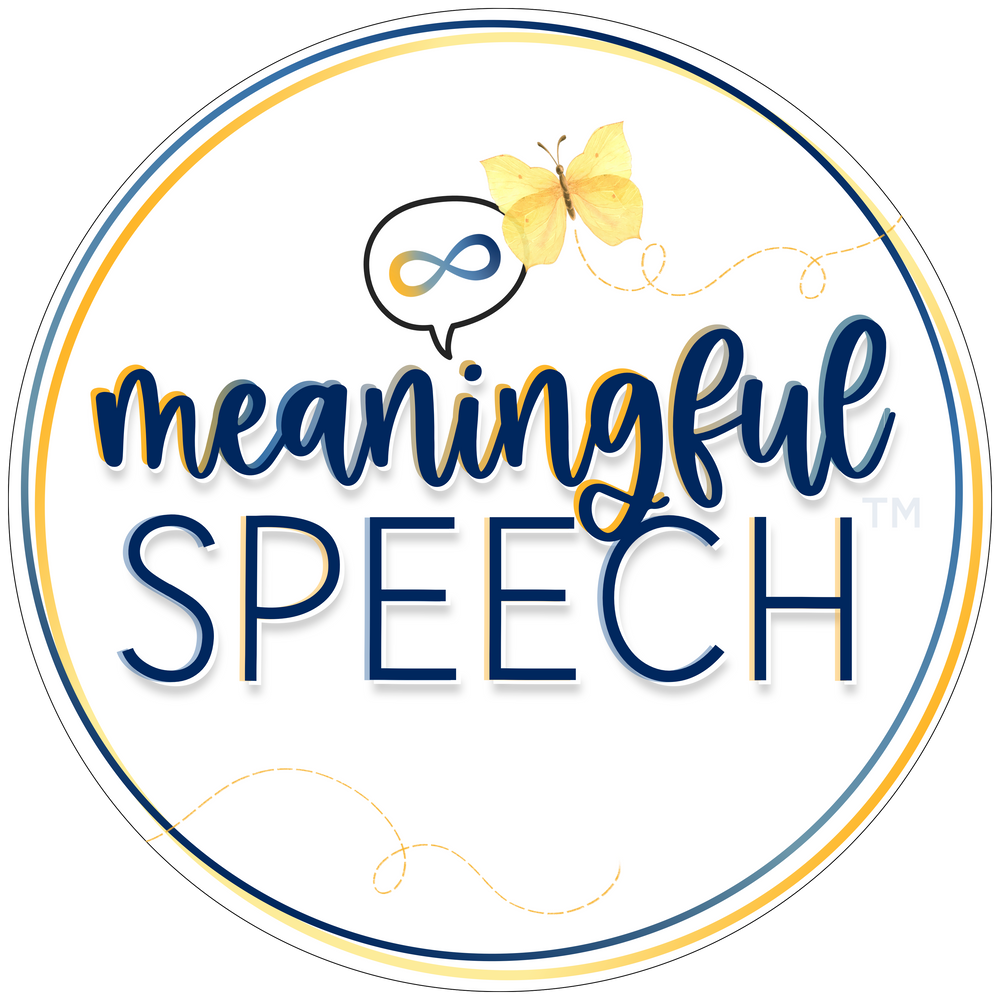Why Gestalt Language Processors Use Media Gestalts
Jun 18, 2025
A few weeks ago, I was playing on the floor with a client. She chose some bristle blocks, and we both began stacking them together. I was doing my usual thing, narrating our play with declarative language and using silence intentionally to give space for spontaneous language (which is often when our gestalt language processors shine!).
While I was quiet, she said:
“A big bad wolf”
If I didn’t understand gestalt language development, I would have had no clue why she said that. Old me might have assumed she was off-topic or talking “out of context.”
But now, I know better.
I knew that “big bad wolf” had meaning for her. I recognized it as a media or book gestalt, a chunk of language she had picked up from a story or show. I got curious. I didn’t try to correct her, redirect her, or get her to say something more “appropriate” (all advice I had been given in the past, but no longer follow!).
Then she said:
“Huff and puff!”
It clicked. She was referencing The Three Little Pigs! The blocks reminded her of the pigs building their houses. Suddenly it all made sense.
Why Do Gestalt Language Processors Use Media Gestalts?
Gestalt language processors often use language from shows, songs, books, and videos. Here’s why:
- They’re meaningful. They are connected to something emotionally significant or memorable.
- They’re dramatic or exciting. For example, The Three Little Pigs story is full of emotion, suspense, and repetition. Most gestalt language processors love this!
- They’re in context to the child. While language may seem random or out of context to us, it fits the child’s context in a way that is completely logical to them.
- They are intonationally rich. They say it the way they first heard it, sometimes volume, pitch and all! This is because gestalt language processors are drawn to language that is intonationally defined.
Are media gestalts a "bad" thing?
This is one of the most common misconceptions and one of the most important to clear up. Some adults worry that when a child repeats language from shows, books, or movies, they’re just “scripting” or not truly communicating something meaningful. In reality, media gestalts are often the most emotionally rich, accessible, and powerful language a gestalt language processor has. They’re tied to moments that are often deeply meaningful for that child. Whether it was a time that made them laugh, cry, feel excited, etc. Like we said above, that’s why that language will stick!
So instead of trying to get them to “say something else,” we lean in. We validate what they are saying. We honor it. And when we do, we create the connection and trust that allows for growth.
Yes, oftentimes media gestalts aren’t easily mitigable and they may not help a child move through the stages of gestalt language development. Sometimes children pick up hundreds of media gestalts that are not easily mitigable, and it can contribute to them being stuck in those earlier stages. So, we recommend honoring that language when it is used, while also considering potential gestalts you can model that are going to support them in moving through the stages.
How can you support your child/client who is a gestalt language processor with media gestalts?
When we validate and acknowledge these media gestalts, we allow for connection. We let the child know we hear them. From there, we can model potential gestalts that are easier for the child to mix and match or trim down over time. For example:
- “That’s silly!”
- “Wanna go outside?”
- “I’m hungry”
- “It’s time for school”
These examples are more likely to support the child as they begin to trim down longer gestalts and mix and match into new combinations.
If you’re ready to dive deeper we go in depth about exactly what language to model and how to determine what to target in our original Meaningful Speech course (for professionals and parents).
So What Should You Do When You Hear a Media Gestalt?
Get curious. Observe. Listen. Be a detective.
Ask yourself or others: Is this language from a show? A story? A song? Check in with caregivers or jot it down to revisit later.
Acknowledge everything the child says. No redirecting. No extinguishing. These gestalts are meaningful, whether you know the meaning yet or not and whether they’re communicating directly to you or not. I often nod, smile, repeat it back, or respond simply: “Yeah!” or “Okay.”
Educate others in their life. Encourage families, therapists, and educators to learn more. A great place to start? Our FREE Masterclass on echolalia and child-led therapy. When everyone’s on the same page, that’s when we move the needle forward for our kids.
Want to dive deeper into child-led therapy, gestalt language development and neurodiversity-affirming practices?
There are so many ways to keep learning and growing as a parent or professional:
- There are many free podcasts, webinars and articles to get you started. A comprehensive list of resources can also be found on our website. We now have a FREE masterclass on echolalia and child-led therapy and a Beginner's Guide to AAC & Gestalt Language Processing that are perfect for anyone starting their learning journey or on the fence about purchasing our courses!
- Meaningful Speech Course or AAC + Gestalt Language Processing Course: Deepen your understanding of gestalt language processing and learn strategies to support gestalt language development with one of our self-paced courses or webinars.
- SLP Registry: Find speech-language pathologists experienced in supporting gestalt language processors and child-led therapy.
- Free Webinars and Articles: Access free information to further your own knowledge or get free resources you can share with others.
